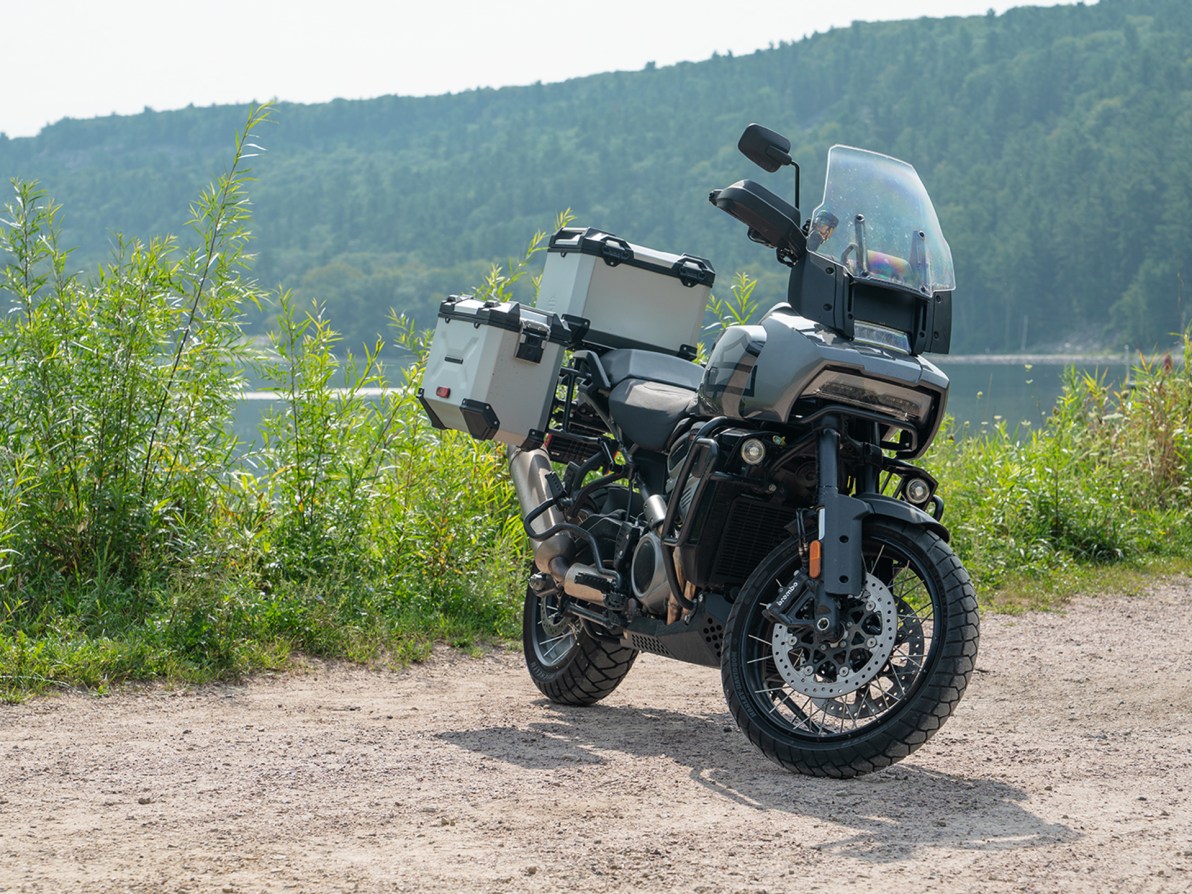We may earn revenue from the products available on this page and participate in affiliate programs. Learn More ›
Not every hunter or angler needs a truck, SUV, or even a car, especially if they spend a majority of their time in the woods or on the water alone. I hunt and fish solo most of the time, and as long as the weather is cooperating, I’ll ride my motorcycle. Adventure bikes have become popular amongst many cross-country riders who also want to take their motorcycle off-road. They’re a perfect option for minimalist hunters and anglers (as long as you don’t need to haul huge amounts of meat home). If you haven’t ridden before, learning is easier than you think, and even top-of-the-line adventure bikes aren’t any more expensive than a used truck.
In the same way that the new Ford Bronco is far superior in terms of performance to a Subaru Outback, all adventure motorcycles were not created equal. Some are essentially motocross bikes with lights. Others are 600-pound behemoths that can run across multiple states before stopping for gas. Somewhere on that spectrum is the right bike for you. So, if you love the open round, and love to go off-road into the backcountry to hunt or fish, these are the best adventure bikes for your hunting and fishing pursuits.
What Makes a Good Hunting Motorcycle?
Finding the right motorcycle for your personal style of hunting and fishing requires a little homework.
First, you need something that can leave the asphalt behind and get you as deep into the wilderness as you want to go. All the motorcycles I will recommend have a mix of on- and off-road capability. Some are essentially touring bikes that use sophisticated technology to master rugged terrain. Others are so light and affordable that they blur the line between motorcycle and scooter. One of the picks isn’t even intended for road use, so you would have to haul it to a trailhead and ride in from there. Knobby tires and a can-do attitude will go a long way, but features like long-travel suspension, crash protection, and an engine that pulls from idle like a tractor are highly recommended if you plan on diving deep into the unknown.
Of course, being able to carry a little bit of luggage is also important. Having someplace to store cargo besides a backpack makes a huge difference, even if you’re just riding out to check your game cameras or add some corn to your feeder. All the bikes on this list have room for gear. Some use a metal rack where you can strap things down, and others can be optioned with locking hard cases from the factory. Unless you’re just riding around to scout locations, it’s a good idea to have your storage situation figured out.
Finally, I can’t talk about hunting motorcycles without addressing range. Maybe you have land of your own, or maybe there’s public land nearby. That’s great; the world is your oyster. But if you have to spend a day on the road to reach your hunting spot, being able to space out your pitstops is key. Dual-sport and enduro motorcycles are very similar to regular dirt bikes in terms of range; that is to say, it’s pretty limited. Big adventure-touring machines often come with five-gallon tanks good for more than 200 miles at a time. You’ll either need to buy a motorcycle with adequate range, upgrade to a larger tank (a popular and easy solution on many adventure bikes), or add gas cans to carry enough fuel for a two-way trip.
Tips for Choosing a Hunting Motorcycle
- Start with a platform that was built for off-road riding. Good bones are essential. Look for a bike with lots of suspension travel to soak up the bumps of trails and unmaintained roads. Armor-like skid plates, crash bars, and handguards will save you from expensive repairs (and hospital bills) in the long run. Power tends to come with extra weight, so find the right mixture to suit your intended blend of highway miles and off-road exploring.
- Budget for a motorcycle and accessories. Remember that the motorcycle itself is only part of the equation. Set some money aside for things like riding gear, luggage, a repair kit, and upgrades like a rifle rack and auxiliary lights. You can save huge amounts of money by buying a used motorcycle, but used gear can be harder to come by and doesn’t depreciate very much. Do some research to plan for all the expenses you’ll have to cover on the way to building your ideal hunting motorcycle.
- Experiment with your gear. Once you have everything gathered up, it’s time to get creative. Side cases are simple enough, but play around with mounting points for things like rifle cases that you might have to fashion yourself. Figure out how to route wiring for extra electronics like aftermarket heated grips and GPS units. A lot of adventure riders swear by PVC pipe for tool kits and maps. Search online forums to see what other solutions riders have come up with.
- Know the rules. It’s common for off-road-only vehicles to require state registration stickers to be used on public lands. Research what state and local rules are in place in your area. The people who enforce these rules can seriously ride, too, so don’t plan on solving the problem through conflict avoidance.
- Recruit a riding buddy. I recommend that new riders buddy up. You rarely have to worry about tipping over a truck or SUV, but dropping a bike while riding on the dirt is almost inevitable. Having crash protection for you and the motorcycle is a good insurance policy, but you’ll be a lot more comfortable riding in the middle of nowhere if you have a friend to lift the bike off you or render first-aid.
- Practice, practice, practice. Riding a motorcycle takes a lot more skill than driving a car—I’ve crashed both, and there’s more margin for error inside a car than on a bike. You spend countless hours practicing with your firearm, bow, or rod of choice, and you should take riding just as seriously. The good news is that improving your riding skills is fun. Take the bike on short errands, or drive it up to deer camp for the weekend. After a a few months, you’ll be capable of taking it on longer trips.
1. BMW R 1200 GS Adventure
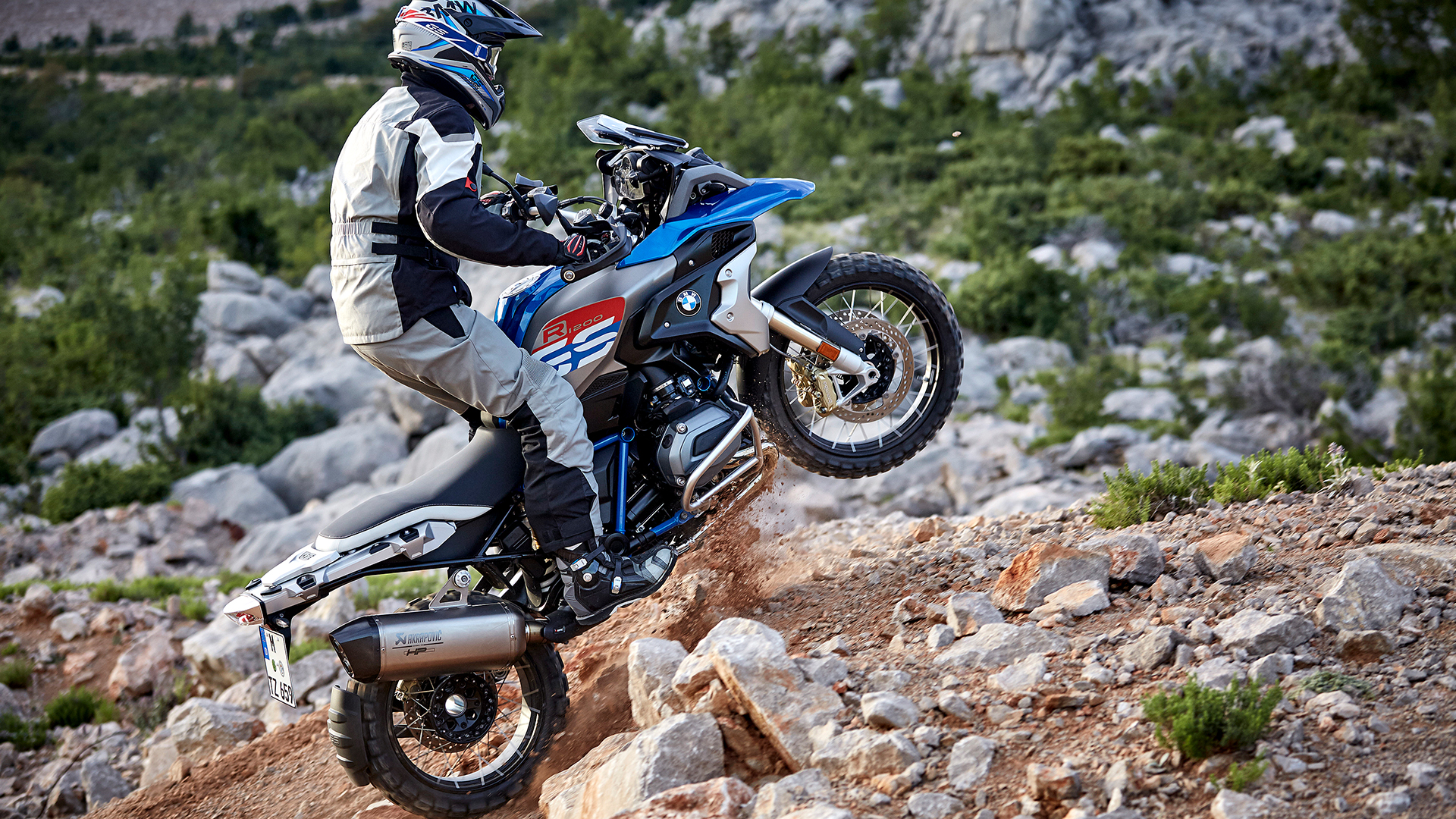
The BMW GS line of bikes has been the gold standard of adventure bikes since 1981, and I don’t see the R 1200 GS surrendering that title anytime soon. It’s sure-footed, fast, smooth, and comfortable. It can carry all your gear to the ends of the earth and back. If you need more convincing, check out what might be the greatest road trip of all time.
Balance is the name of the game for the R 1200 GS. It’s not the best at anything, but it probably does everything better than any other motorcycle. Four decades of obsessive German engineering have made these bikes incredibly reliable, and the price tag reflects that. Expect to pay more than $20,000 for a new one. Used R 1100 GS models can be found for less than $4,000 if you shop around and don’t mind high mileage (and you shouldn’t, these bikes are well engineered). Be sure to opt for the Adventure trim to get spokes wheels, which will give you more power and grip off-road.
2. KTM 890 Adventure
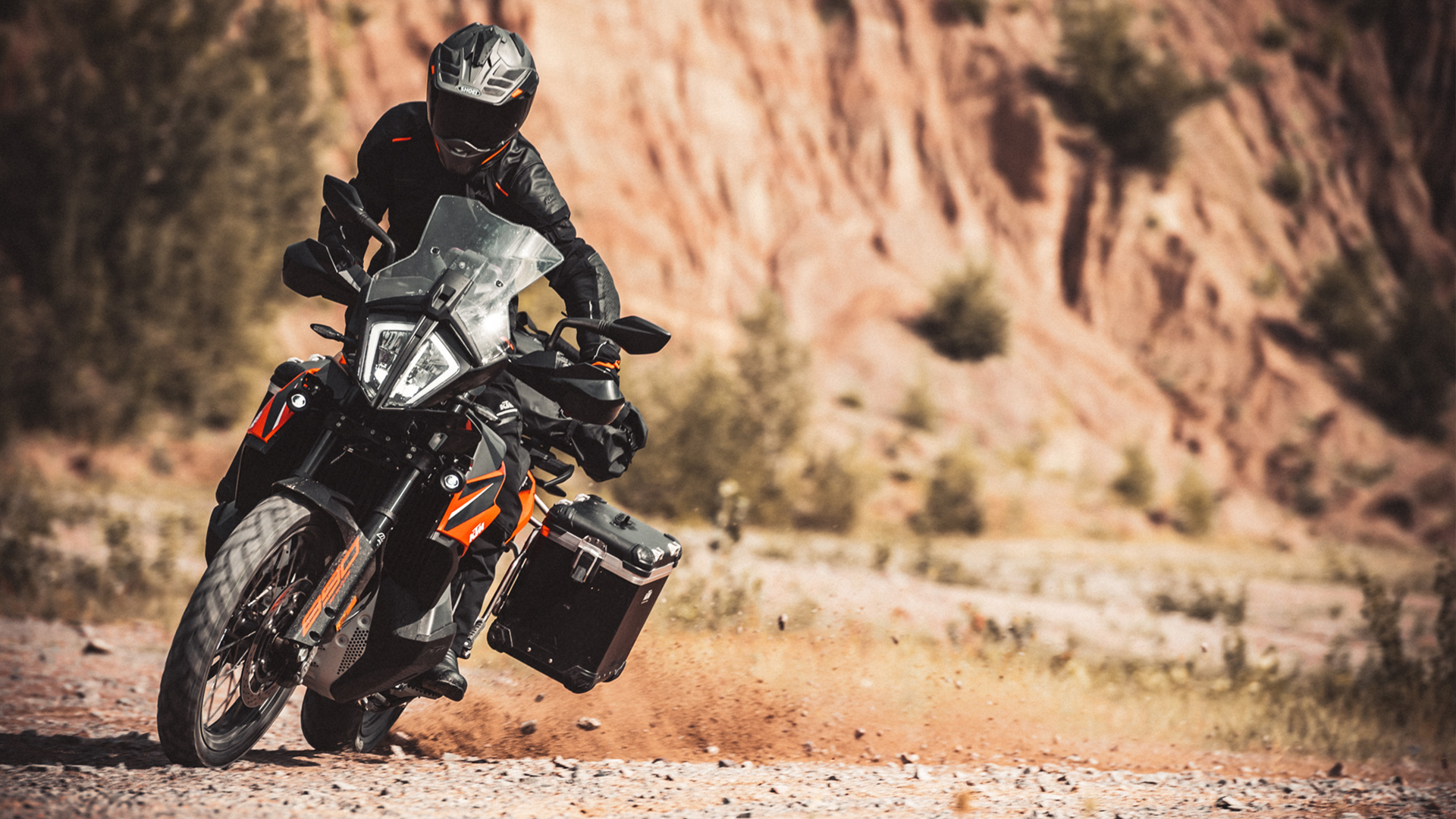
KTM’s “ready to race” motto is more than marketing speak. Its motorcycles––the 890 Adventure included—are fast, sharp, and aggressive. It seems like the engineers started with a purebred race bike and figured out how to make it street legal. If you’re an adrenaline junky, KTM orange is probably your color.
The 890 Adventure is one of KTM’s more approachable travel companions and is competitively priced at $13,099. It handles pavement and dirt with ease and gets better the harder you push it. The low-mounted gas tank is unconventional and does a phenomenal job of keeping the center of gravity low. That will come in handy when navigating technical, low-speed obstacles. The midsize engine is built more for speed than heavy hauling, but it performs even under the stress of a reasonable load of hunting gear.
3. Harley-Davidson Pan America 1250 Special
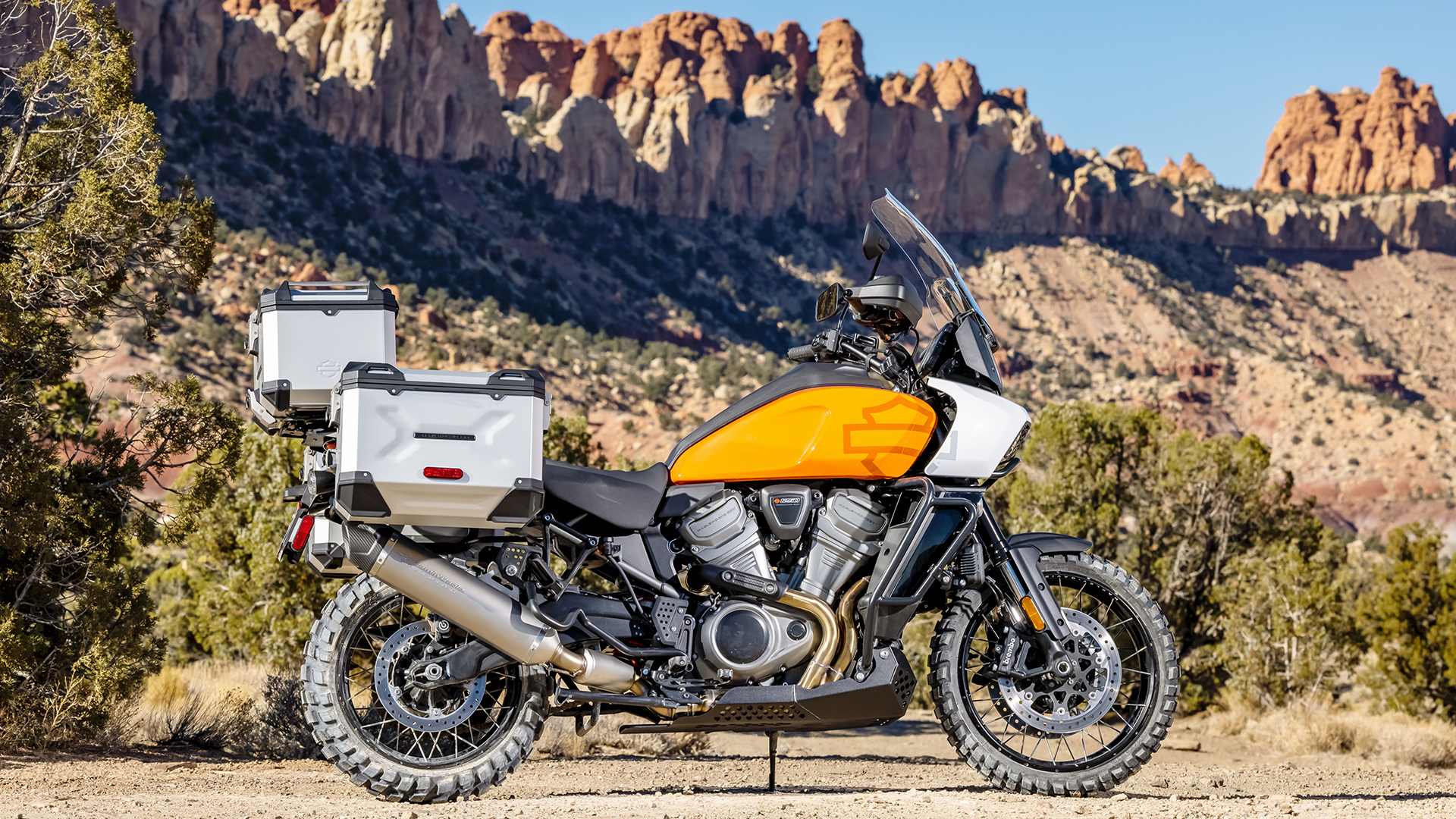
Not many people saw Harley-Davidson’s entry into the adventure bike segment coming, and I don’t think anyone expected it to be this successful. There are good reasons why the Pan America 1250 has been flying off showroom floors. It’s well-built, loaded with features, easy to ride (especially for shorter riders), and priced right at $19,999. I spent a week with one and came away impressed.
The less expensive base model is tempting, but spring for the 1250 Special if you plan on doing any amount of dirt riding. Spoked wheels and a metal belly pan go a long way in preventing frantic calls for backup. Enjoy a slew of innovative features aimed at all-terrain adventure and take comfort in Harley-Davidson’s massive dealer network.
4. Kawasaki KLR650
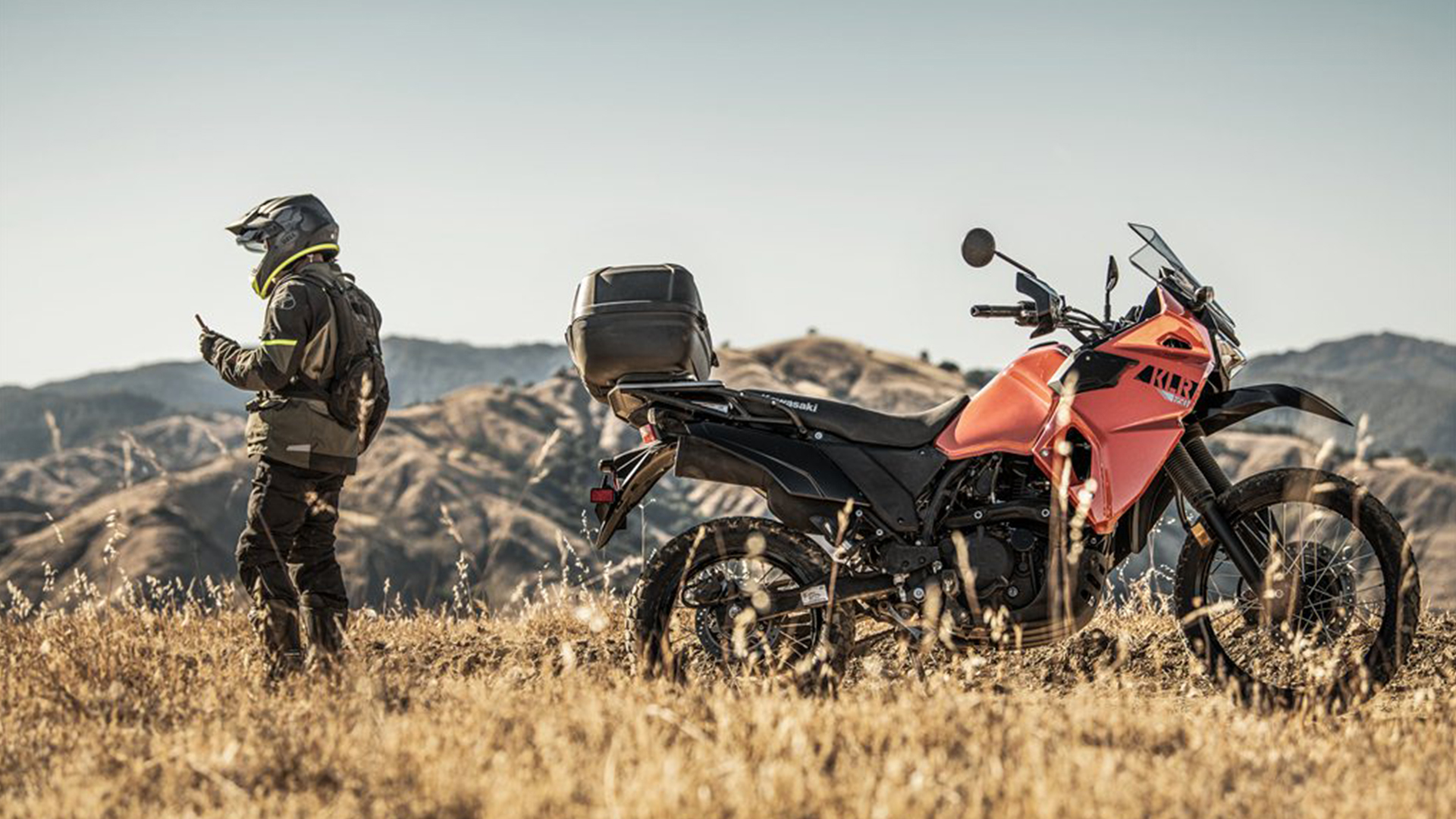
Kawasaki’s KLR650 achieved legendary status as a working man’s bike by being affordable, reliable, and easy to maintain with basic hand tools. The 2022 model is a big leap forward from the tractor-like motorcycles that have been around for decades, but used models are plentiful and very cheap (just remember to ask if the doohickey has been fixed—it’s a thing. I’m not joking).
The KLR650 has always been a reliable off-road adventure machine, but it struggles with extended highway riding. The under-stressed 650cc single-cylinder engine is mellow off-road but gets buzzy and can consume oil above 60 miles per hour or so. One of the biggest advantages of this model is endless aftermarket support. If budget is a concern, you can’t do much better than the mighty KLR650 for $6,999 (with ABS) or just a few grand on the used market.
5. Royal Enfield Himalayan
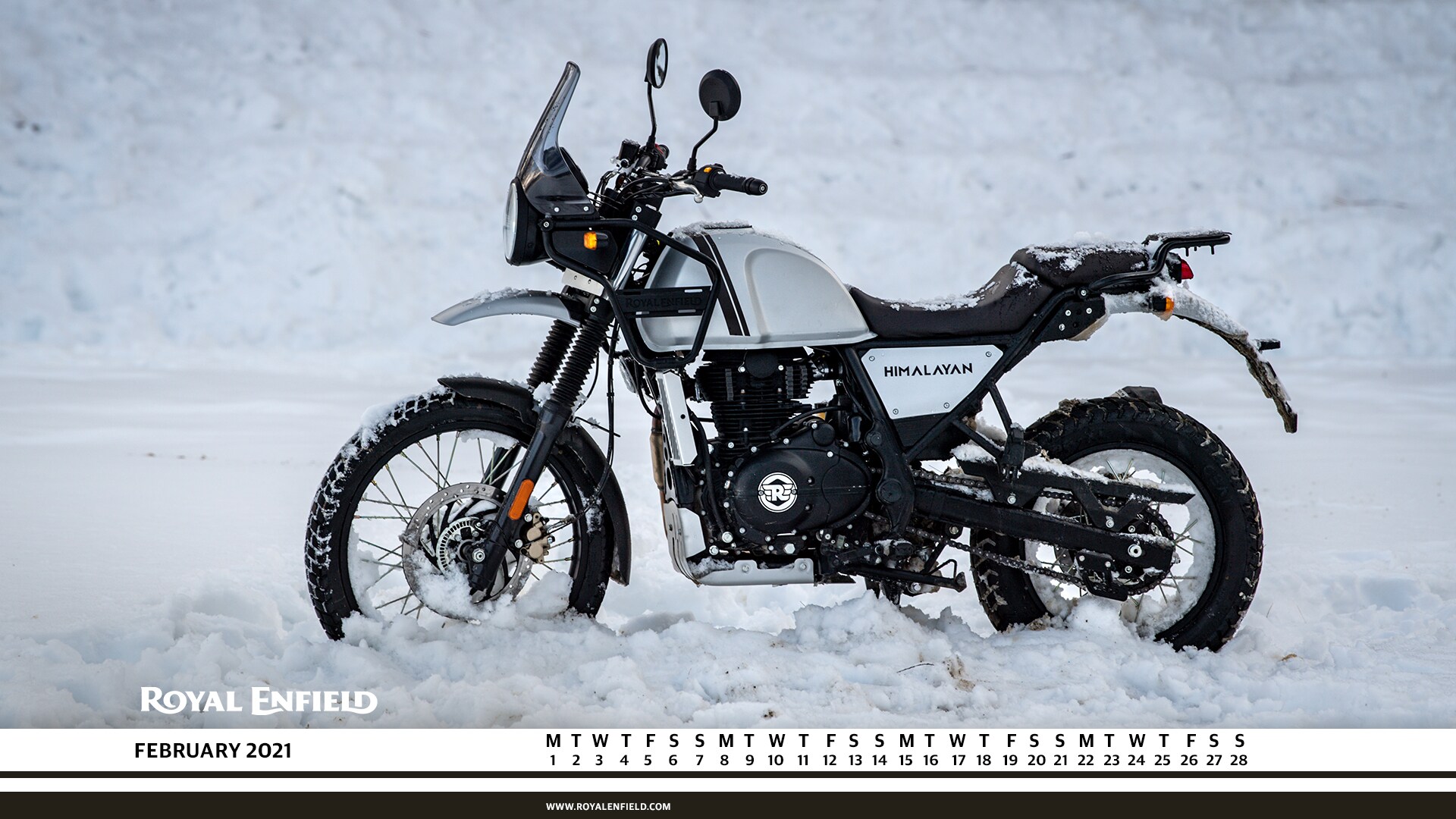
Royal Enfield doesn’t have much of a presence in the U.S., but it’s a significant player internationally. The once-British company is based in India and cranks out some of the most reliable and affordable bikes on the market. The Himalayan is used by the Indian military to reach places that are inaccessible by other vehicles, so it’s a perfect match for hunters.
The air-cooled, 411cc, single-cylinder engine is simple but it only generates about 25 horsepower. The suspension is very soft, but the bike only weighs about 400 pounds. If the route to your favorite hunting spot or fishing hole includes country roads and backwoods trails, it’s an ideal travel companion. Hard luggage upgrades are available, but you’ll want to keep your cargo relatively light. The good news is that this bike has an MSRP of only $4,500. That’s almost unheard of for a new motorcycle these days, let alone one this good.
6. Rokon Trail-Breaker
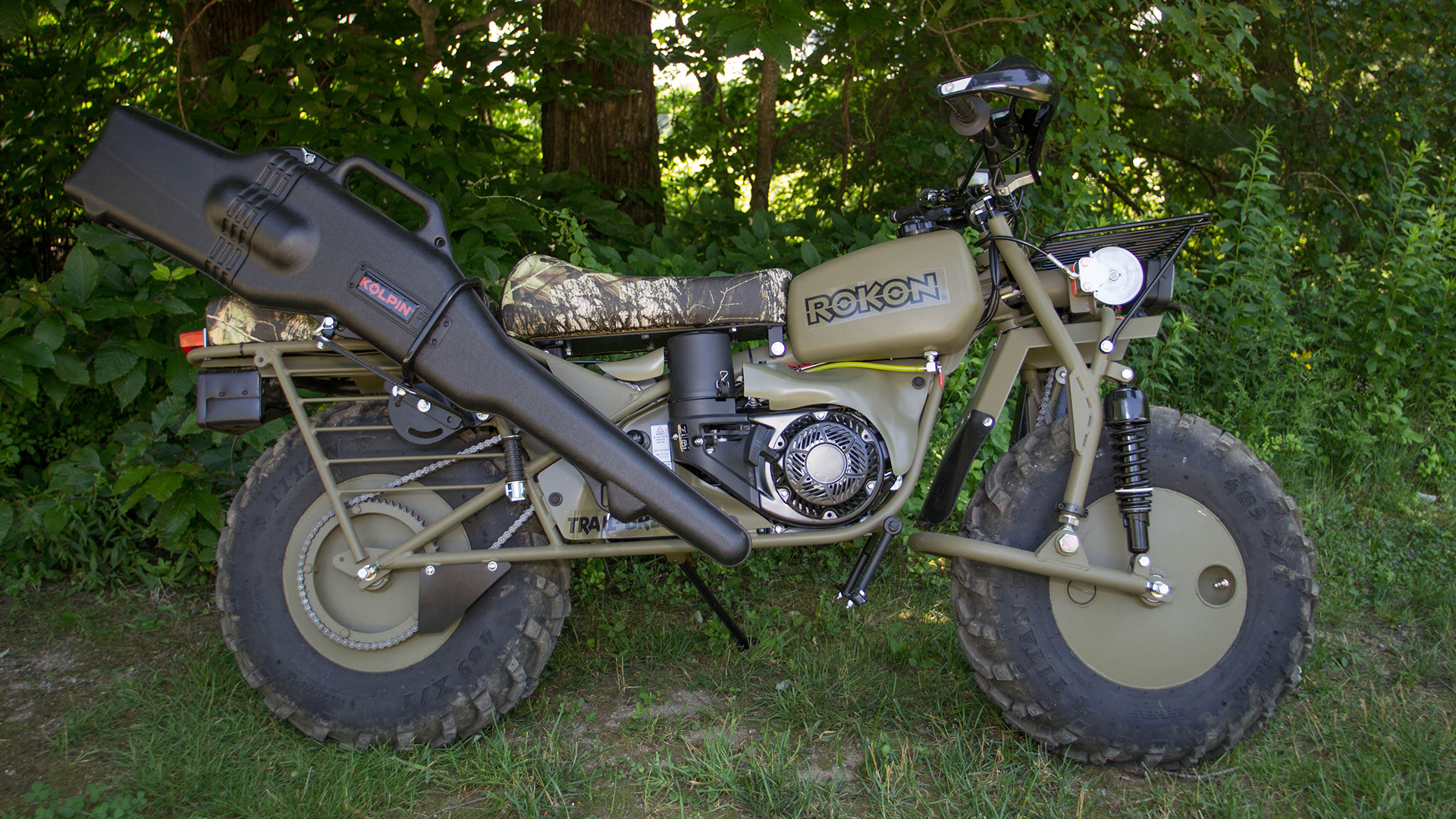
If your hunting vehicle needs to tackle extremely rugged, uncharted terrain, the Rokon Trail-Breaker might be just the pack mule you’re looking for. It doesn’t look like any other motorcycle because it isn’t like any other motorcycle. It’s two-wheel drive. It doesn’t have a clutch. It weighs only 218 pounds and can tow 2,000 pounds. It can even float.
At $8,775, the Trail-Breaker with the hunting package isn’t cheap, but it’s incredibly capable. Even though it’s possible to make this bike street-legal, I wouldn’t want to ride it on pavement except maybe to cross the road. If you want something that’s easy to ride and hard to break around deer camp, the Trail-Breaker is a safe bet.
7. Honda Trail125
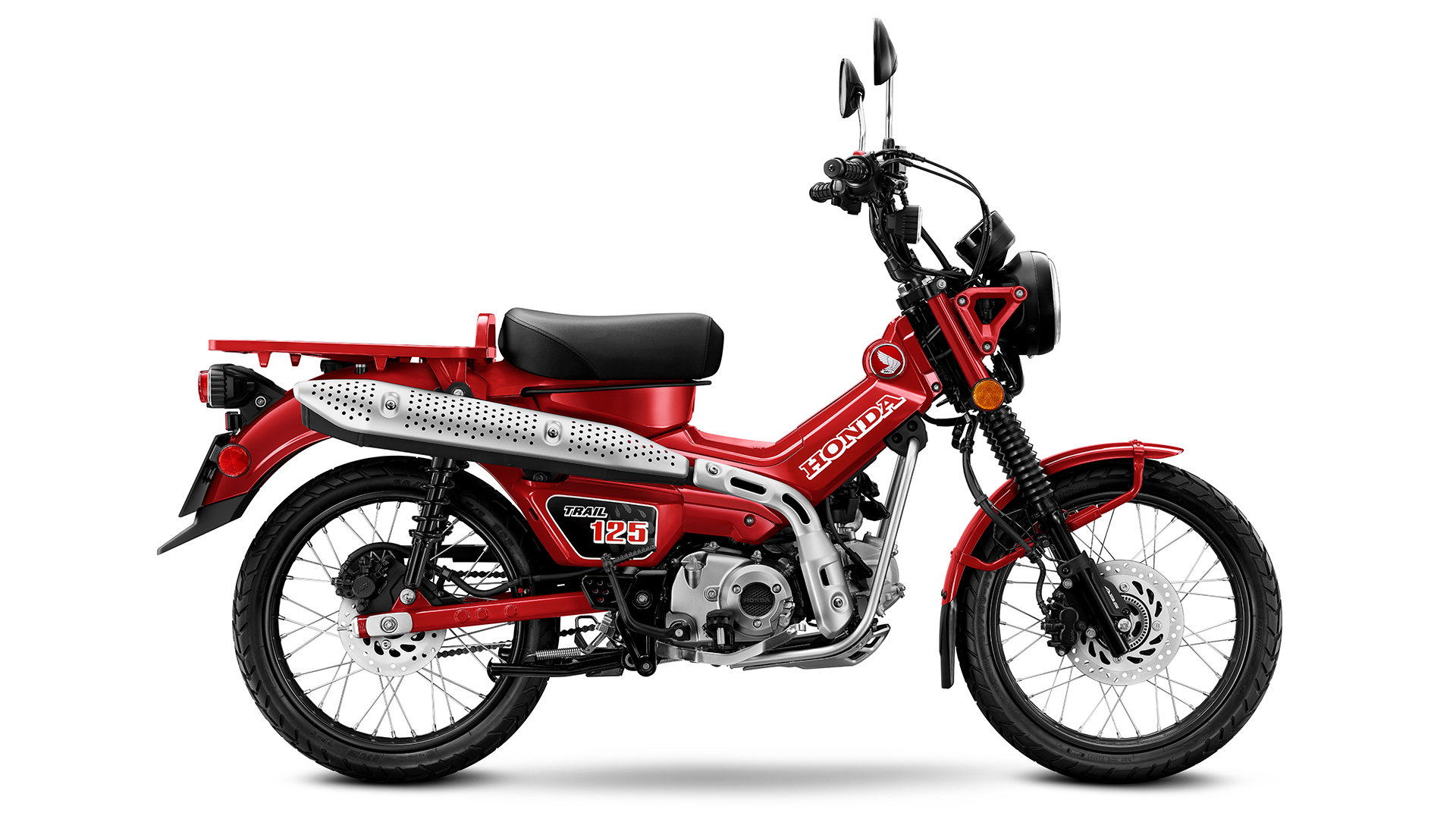
Hardcore outdoor adventures are great, but what if you just want to escape to the local fishing hole on your lunch break? The Honda Trail125 is just what you need. Sure, its tiny engine and clutchless shifting might draw skepticism from the motorcycle crowd, but its history and practicality are beyond question.
Honda lists a horsepower figure of “N/A” for the Trail 125, but that’s not a problem considering the curb weight of 259 pounds. Don’t plan on carrying much more than lunch and a tackle box though. This is my pick for new riders because it’s user-friendly and affordable ($3,899). If you pick one of these up to buzz out for an afternoon of fishing or to check on your deer stand, you’ll probably find yourself making up all kinds of other excuses to ride, too.
8. Ural Gear Up Sahara
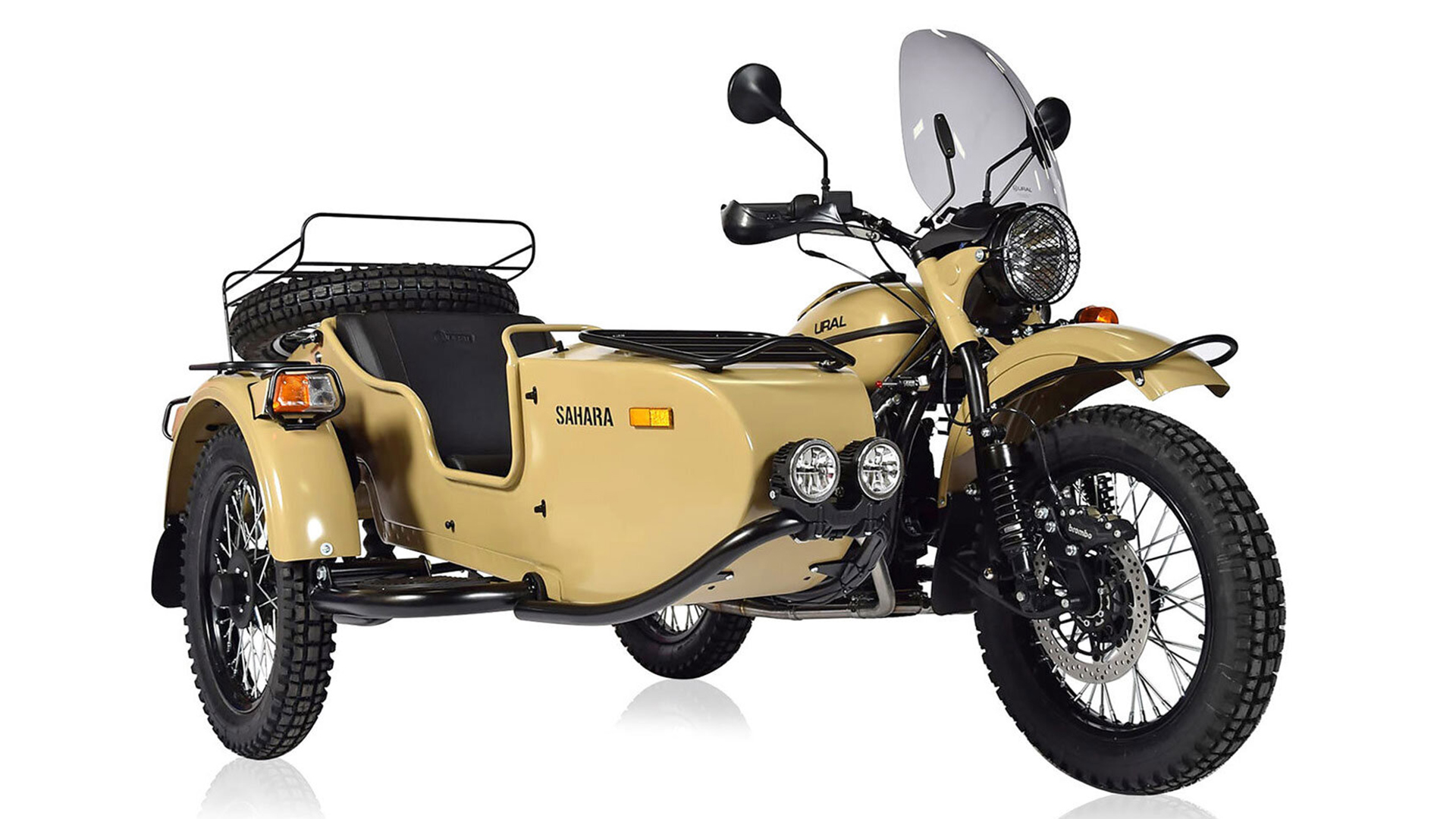
The sidecar on the Sahara offers (relatively) comfortable seating for a hunting buddy or extra room for gear. Both rear wheels receive power via shaft final drive, so Ural Gear Up models are much better off-roaders than you would expect. The Sahara package includes desert camouflage paint, an additional luggage rack, handguards, a 12-volt adapter, and knobby tires.
Riding with a sidecar requires a little practice, but at least it takes balancing the bike out of the equation. Ural’s 749cc engine will sustain 75 miles per hour although it isn’t exactly a powerhouse. A reverse gear makes maneuvering in tight spaces much easier. The asking price of $22,419 seems high for something that hasn’t really changed since the second World War, but there’s also no other adventure like it.
Read Next: Adventure Motorcycle Review: The Harley-Davidson Pan America 1250
FAQs
Q: Can motorcycles get me where I need to go?
Absolutely. In fact, motorcycles will take you to plenty of places that four-wheeled vehicles can’t access. They’re usually much faster off-road, too. Feel free to use these guys as inspiration.
Q: Can motorcycles carry all my gear?
Motorcycle luggage is surprisingly accommodating. I packed everything from my 60-liter camping pack into two of the Harley-Davidson Pan America’s hard cases and had one leftover. Not only can you fit a day’s worth of hunting gear on a bike, but you can also strike out into the woods for a week or more and have everything you need.
Q: What about the packing wild game meat home?
I admit, packing home game animals will require some creativity, but people do it. Field dressing and breaking down your animal into cuts is one option. Reserving your motorcycle for fishing and small-game hunting is another. You have to be realistic. You can’t pack a bull moose home if a motorcycle is your only source of transportation. But if your predator hunting, hoping from one location to another, it’s ideal.
Q: What kind of range can I expect from a tank of gas?
Range varies widely from motorcycle to motorcycle, and even from day to day depending on how heavy your throttle hand is. The bikes we chose for this list can go from 150-200 miles on a tank of gas. The interesting thing is that each of the big ADV bikes does that with a massive, five-gallon tank; the tiny Honda does it with a 1.5-gallon tank (and an incredible 100-mile-per-gallon fuel economy rating). The Rokon is the slowpoke of the group, but each wheel can hold an extra 2.5 gallons. Maybe it’s cheating, but that extra fuel can stretch its range to 600 miles. Not that you’d want to sit on one that long.
Q: What if the weather gets nasty?
Being hot, cold, or wet comes with the territory for hunters. Still, packing a rain suit is a good idea. So is investing in a heated seat and grips. If you have long distances to cover, remember that riding on the highway can feel as much as 20 degrees cooler than the ambient temperature. Packing layers is key.
Q: If I trailer my motorcycle, do I still need to register it?
Odds are, you will need to register your motorcycle even if you never use it on the street. Staying compliant is usually cheap and easy. The Bureau of Land Management has helpful information about this, and your state will have its own set of laws.
